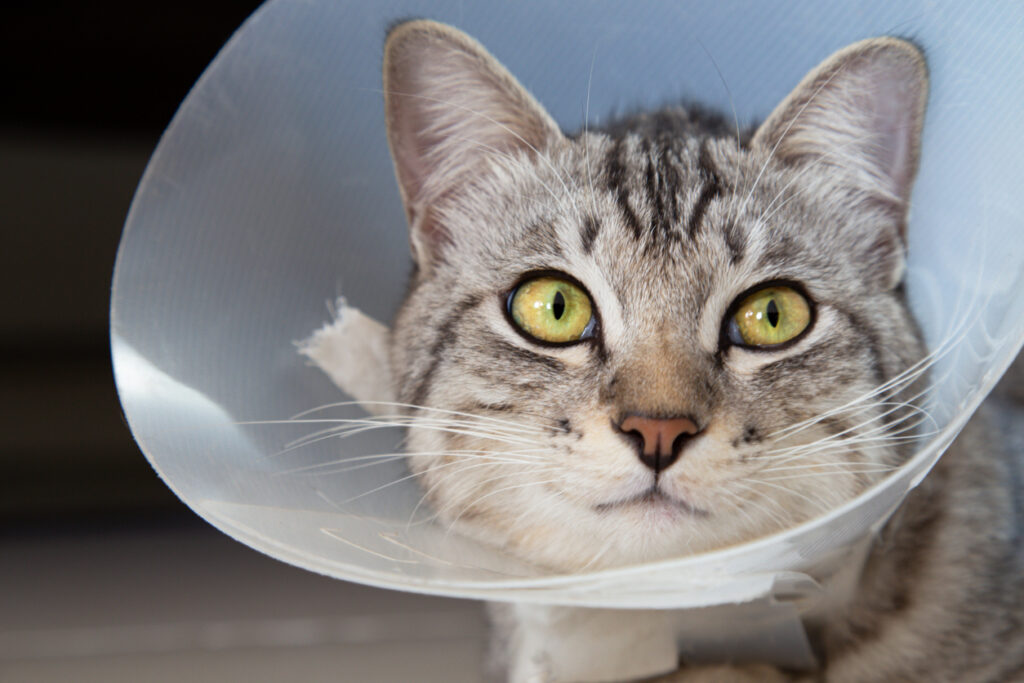Feline Fix: Understanding Cat Spaying and Its Benefits
Most veterinary and pet professionals in the US will recommend that you get your cat spayed. However, the truth remains that cat spaying is still a surgery. As a result, it is normal for cat owners to want to get the facts before agreeing to spay their cat.
Luckily, the benefits of spaying your cat greatly outweigh any of the potential disadvantages. For instance, spaying your cat will eliminate the chance of you having to deal with a surprise litter of kittens or your cat going into heat. Spaying your cat will also make them less likely to have certain behavioral issues or medical conditions.
This article aims to provide cat owners with a complete understanding of cat spaying. It covers the advantages and possible drawbacks of the procedure, as well as addressing frequently asked questions.
What is Spaying?
Spaying involves taking out a female animal’s reproductive organs including the uterus and the ovaries. This prevents the cat from reproducing and becoming pregnant. Additionally, there are some other benefits of spaying your cat as well.
At What Age Can Cats Get Spayed?
It is commonly advised by veterinarians to have cats spayed around the age of six months. At this stage, cats are generally able to tolerate the surgery well and have not yet reached sexual maturity, reducing the risk of them becoming pregnant before the procedure. This ensures that cat owners who choose to have their cats spayed at six months old can be relieved of concerns about their cat’s potential pregnancy prior to the surgery.
What are Some Benefits of Spaying Your Cat?
Spaying your cat offers several significant advantages. Firstly, it eliminates the risk of unplanned feline pregnancies or reproductive organ-related conditions in female cats. Additionally, spayed cats do not experience heat cycles, which can be inconvenient and disruptive. Furthermore, spaying your cat may help reduce certain behavioral issues. Let’s explore the key benefits of cat spaying in detail.
No Surprise Litters
Once you remove a female cat’s reproductive organs, they can no longer get pregnant. This is a major bonus for most cat owners since taking care of kittens can be time-consuming and expensive, and intact cats could potentially have a lot of kittens in their lifetime.
Your Cat Won’t go into Heat
Dealing with a cat that is in heat can be inconvenient. They often become territorial and set on finding an intact male cat to mate with. Cats will also tend to be much more verbal, even sounding like they are yelling out when they are in heat. The good news is that cats no longer go into heat once they have been spayed.
Less Behavioral Issues
Research indicates that spayed female cats tend to exhibit fewer behavioral problems compared to intact female cats. This is attributed to the fact that spaying reduces the levels of hormones in their bodies. As a result, behaviors such as spraying, aggression, and territorial-based behaviors may be reduced or eliminated in spayed cats.
Reduce Chances of Developing Certain Diseases
Since spaying involves removing a cat’s reproductive organs entirely, this procedure also has the benefit of removing the chances of your cat developing certain diseases and medical conditions. Specifically, any conditions that affect the reproductive organs such as uterine infections, uterine cancers, mammary cancer, and cervical cancers just to name a few.
Are There Any Disadvantages to Spaying Your Cat?
There are only two possible disadvantages to spaying cats, and for most cat owners these potential drawbacks are not a significant issue. The first is that cats can never get pregnant again after being spayed. So, if you are planning on breeding your cat you shouldn’t get them this procedure. Since most cat owners don’t plan on doing this, this is benefit rather than a drawback for many cat owners.
The other potential downside is that spaying is a surgical procedure that does require your cat to be under anesthesia. While this isn’t a problem for most cats, it can be a concern in some cases. Consult with your vet if you are concerned about your cat being put under anesthesia or getting a surgery like spaying.
How is the Procedure Performed?
The surgery begins by putting the cat under general anesthesia. Then, once the cat is unconscious and stable, the vet will make a small incision in the middle of the abdomen. It is here that the reproductive organs are reached and then removed. The incision is then sutured with stitches and the cat goes into recovery from surgery. As long as the procedure goes well, your cat should return home with you that same day.

How Long Will Cats Need to Recover from Being Spayed?
Most cats will recover from spaying fairly quickly, and most cats will be completely healed after 10 to 14 days after surgery. During this time, it is important to keep your cat from licking at their sutures or getting them dirty. You will also need to keep them from engaging in physical activity that could rip their sutures out prematurely.
It is important to follow the instructions given by your vet during this time. Follow their instructions closely and accurately and contact your vet if you have any questions about your cat’s condition or recovery care after spaying.
What Does the Recovery Process of Spaying in Cats Look Like?
Most cats will be lethargic, but otherwise fine the first few days after surgery. After this they should start to get back to normal more and more. Cats should be eating and using the litterbox around 12 hours after surgery.
Conclusion
Spaying your cat can be a beneficial decision for both their health and behavior. It eliminates the risks of unplanned pregnancies and conditions related to reproductive organs in female cats. Additionally, spaying can help reduce or eliminate certain behavioral problems due to hormonal changes. As recommended by veterinarians, having your cat spayed at around six months of age can be an ideal time for the procedure. If you’re considering spaying your cat, consult with your veterinarian to discuss the best options for your furry companion’s well-being. Remember, responsible pet ownership includes taking appropriate measures for your cat’s health and happiness, and spaying is a key component of that.
Looking for a veterinarian to spay your cat near Tewksbury, MA? Contact Shawsheen Animal Hospital. Our vets are experts at ensuring your cat will stay safe and comfortable during their spay surgery. Call us today at (978) 851-5558, or Request an Appointment online.





